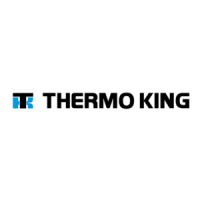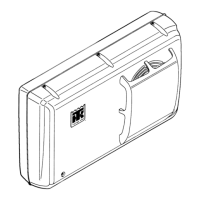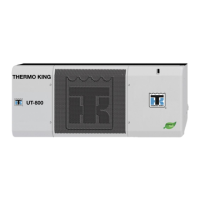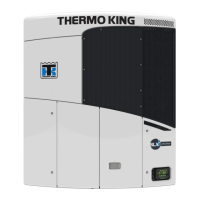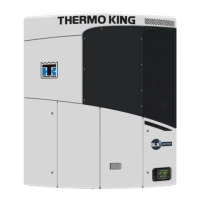MP-3000 Controller
67
The amount of on time depends on the
condenser coil, ambient and compressor
discharge temperatures.
• Power limit is active during initial start-up and
pull-down when the unit is cooling at return
air temperatures above -10 C (14 F).
Cool
• After initial start-up and pull-down to 1.0 C
(1.8 F) below setpoint, the controller calls for
the Cool mode whenever:
• Return air temperature increases more
than 1.0 C (1.8 F) above setpoint.
• Return air temperature is above setpoint
and the compressor has been off for 30
minutes.
• Controller turns on the Compressor LED
when the compressor is operating.
• Compressor must operate for a minimum of 5
minutes after startup.
• After initial pull-down to setpoint, controller
keeps the In-range LED on as long as the
return air temperature remains less than 1.5 C
(2.7 F) above setpoint.
Null
• The controller calls for Null when the return
air temperature decreases more than 1.0 C
(1.8 F) below setpoint.
• The controller stops the compressor and
condenser fan.
• The controller also de-energizes (closes) the
liquid line solenoid valve.
• The evaporator fans continue to operate
(except when Economy mode is on).
• Compressor remains off for a minimum of 5
minutes.
Defrost
The evaporator coil sensor temperature must be
below 18 C (65 F) to initiate a Demand Defrost or
Manual Defrost. The evaporator coil sensor
temperature must be below 10 C (50 F) to initiate
a Timed Defrost.
• Demand Defrost function initiates Defrost
immediately when:
• Temperature difference between the return
air sensor and defrost (evaporator coil)
sensor is too large.
• Temperature difference between the left
hand and right hand supply air sensors is
too large and unit has operated for more
than 90 minutes since last defrost.
• Temperature difference between the
supply sensors and return air sensor is too
large.
• Manual Defrost may be initiated immediately
by pressing the D
EFROST key or by REFCON
Remote Monitoring Modem (RMM).
• A Timed Defrost always starts at 1 minute
past the hour immediately following a defrost
timer request for defrost. For example, if the
defrost timer requests a defrost cycle at 7:35,
the defrost cycle will start at 8:01. The
datalogger will record a Defrost event for each
A. Cool
B. In-range
C. Null*
1. Decreasing Temperature
2. Setpoint
3. Increasing Temperature
Figure 23: Frozen Load Control Sequence
(Setpoints at -10 C [14 F] and Below)
AXA0157
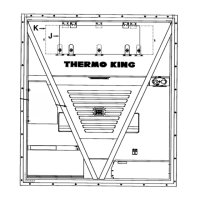
